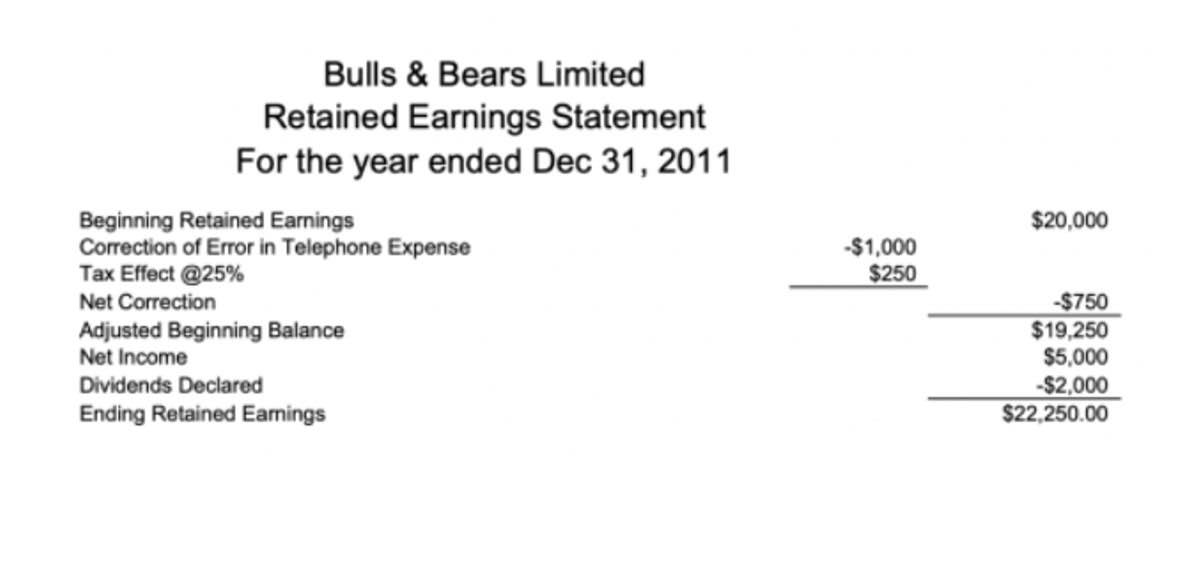Table of Contents
Bet on Red – Unlocking the Secrets of Casino Roulette Strategies
Understanding the dynamics of the spinning wheel is fundamental for anyone looking to improve their gameplay. The game features a variety of betting betonred options that cater to different risk appetites. By focusing on specific wagers, players can effectively manage their bankroll while enhancing their chances of success.
One key aspect is the awareness of odds associated with different bets. For instance, wagering on single numbers offers a lucrative payout of 35 to 1, yet the probability of winning remains only 2.63% on a standard European wheel. In contrast, choosing red or black yields a nearly 50% success rate, though it pays 1 to 1. This illustrates that strategic choices alter both potential gains and risk exposure.
Another recommendation is employing progressive betting systems. Techniques such as the Martingale or Fibonacci can adapt to the player’s comfort level while providing a structured approach to staking. These methods allow participants to adjust their bets based on previous outcomes, which can lead to more informed decision-making as the game progresses.
Lastly, maintaining discipline is paramount. Effective bankroll management ensures that players avoid the common pitfalls of impulsive betting. Setting clear limits not only preserves funds but also supports a rational approach to gaming. By focusing on calculated strategies, enthusiasts can navigate the exhilarating world of the spinning wheel more expertly.
Mastering the Basics: Understanding the Roulette Wheel
To excel in any gaming experience involving a spinning wheel and numbered pockets, a solid grasp of the equipment is essential. Here, we will break down the main aspects of this captivating apparatus.
The wheel itself consists of various components:
- Numbers: Participants will find a total of 37 or 38 pockets, depending on whether the variant is European or American. The European model features numbers ranging from 0 to 36, while the American includes an additional 00 pocket.
- Colors: The pockets alternate between black and red, with green designated for the zeros. Understanding the distribution of these colors can aid in predicting outcomes.
- Wheel Direction: Familiarize yourself with which way the wheel spins. Typically, the rotation is counter-clockwise, while the small ball travels in the opposite direction.
Additionally, the layout of the wheel influences how one engages with the game:
- Hot and Cold Numbers: Players often analyze previous results to identify frequently appearing or rarely seen numbers. This practice can inform future choices.
- Sector Analysis: Understanding which segments of the wheel provide better odds or understanding personal tendencies can improve decision-making.
- Time of Spin: Observe how the speed of the wheel and ball impacts outcome variance. Players can enhance strategic approach through experience.
Lastly, knowing pacing and rhythm is crucial. Watching for patterns or clusters can give an edge. With familiarity and practice, one can fully harness the nuances of this dynamic contraption for a more rewarding experience.
Anatomy of a Roulette Wheel: Key Components Explained
A roulette wheel consists of several critical elements that influence gameplay dynamics. Understanding these components enhances comprehension of how outcomes are determined and how to navigate the experience effectively.
Firstly, the wheel features a circular layout divided into numbered pockets. In European variations, there are 37 pockets ranging from 0 to 36. The presence of only one zero creates a lower house edge compared to American models, which include an additional double zero pocket, resulting in 38 total pockets.
The numbers are arranged in a specific sequence around the wheel. This arrangement is not sequential but rather designed to create a balance of high and low numbers as well as red and black colors. Familiarizing oneself with this layout can aid in predicting patterns over time, although outcomes remain random.
Next, the ball serves as a critical component that influences the result of each spin. Typically crafted from a polymer, it is lightweight, enabling it to bounce unpredictably within the wheel as it loses momentum. Observing how the ball interacts with the wheel can provide insights into potential outcomes during gameplay.
The wheel is mounted on a spindle, allowing it to spin freely. The speed at which the wheel spins can affect the ball’s behavior; for instance, a faster spin may lead to less predictable results. Gamblers often consider timing and wheel dynamics as part of their approach.
Lastly, the layout of the betting table complements the wheel’s functionality. This surface indicates where players can place their wagers, categorized into different sections for easy reference. Each section corresponds to specific numbers, colors, and odds, giving players clarity on potential returns for their placements.
Overall, grasping the anatomy of this gaming apparatus equips participants with valuable knowledge that may enhance their experience and decision-making during each session.
Inside vs. Outside Wagers: What’s the Difference?
When exploring the intricacies of a well-known game of chance, understanding the distinction between inside and outside wagers is crucial for any player aiming for informed decisions. Inside wagers refer to bets placed on specific numbers or a small set of numbers located on the inner area of the betting layout. These options typically offer higher payouts due to their lower probability of winning.
In contrast, outside wagers encompass larger groups of numbers and are situated on the outer regions of the betting table. While these types generally yield lower returns, they enhance the likelihood of securing a win. This difference in risk and reward is essential in determining the approach to take during gameplay.
Type of Wager
Examples
Payout Ratio
Risk Level
| Inside Wagers |
Single Number, Split, Street, Corner |
35 to 1, 17 to 1, 11 to 1, 8 to 1 |
High |
| Outside Wagers |
Red or Black, Odd or Even, Low or High, Dozens |
1 to 1, 1 to 1, 1 to 1, 2 to 1 |
Low |
Players seeking to maximize their game can benefit from utilizing a combination of both types. A balanced approach can mitigate losses while allowing for the opportunity to capitalize on high-paying inside bets. Experienced participants often allocate a portion of their stakes to outside wagers for stability, while strategically placing inside wagers for potential high payouts.
Understanding the mechanics of inside and outside wagers not only enhances gameplay but also fosters a deeper appreciation for the dynamics of this exciting pastime. As is common in various forms of gambling, individual preferences will play a significant role in determining the most effective strategy.
Odds and Payouts: How They Affect Strategy
Understanding odds and payouts is crucial for developing an effective approach to the game. The house edge differs based on the type of gameplay, influencing both risk and potential reward. European wheels have a single zero, providing a 2.7% house advantage, while American versions, with an additional double zero, increase this to 5.26%. This discrepancy leads to different strategic considerations.
Payouts vary significantly based on where players choose to place their wagers. A successful wager on a single number often yields a payout of 35 to 1, which, despite being enticing, is accompanied by lower probabilities of winning at just 2.63% on a European wheel. Conversely, betting on even-money options, such as red or black, offers a nearly 50% chance of success but only pays even money–1 to 1–limiting final payout amounts.
Adapting gameplay based on the understanding of these odds enhances decision-making. For instance, many players prefer the safer bets, providing a steadier return. This tactic reduces the risks associated with variance present in high-risk options. However, high-risk strategies may produce bigger wins, appealing to thrill-seekers and those looking to hit substantial payouts.
Incorporating knowledge about the nature of odds within various gameplay types leads to informed adjustments. Key strategies include setting win and loss limits to manage bankroll effectively. Players can also explore progressive betting systems, which may exploit favorable odds in the short term, though they come with substantial risks as well.
Ultimately, formulating a method that aligns with personal risk tolerance and understanding of potential payouts is essential. Recognizing how various odds influence gameplay enables participants to navigate different betting scenarios confidently and effectively.
Advanced Techniques: Strategies for Maximizing Wins
Mastering complex systems can enhance your chances of success when engaging with this game of chance. One approach is the Martingale system, where players double their wager after each loss. This method aims to recuperate previous losses after a win, but it requires a substantial bankroll and is subject to table limits.
Another notable method involves the Paroli system, which operates on a positive progression basis. Here, individuals increase their stake after a win, allowing the potential for substantial gains during winning streaks, while limiting risks during losses by resetting after three consecutive victories.
Fibonacci, a sequence used in patterns, can also be applied effectively. Players use this sequence to determine their wager amounts after losses (1-1-2-3-5-8-13), ensuring gradual increments that may mitigate risks over time.
For more analytical minds, the D’Alembert system presents an interesting option. This strategy involves adjusting bets by increasing or decreasing by one unit based on wins or losses. The rationale is to maintain balance over an extended play session, avoiding dramatic fluctuations.
Lastly, a visual approach–tracking wheel biases–can yield insights into which numbers or sections hit more frequently. While it demands patience and persistence, consistently recording outcomes might reveal hidden patterns, providing a competitive edge.
Implementing these refined methods requires discipline and a clear understanding of each approach’s mechanics. Regular assessment and adjustment based on performance can significantly influence overall success.
Martingale System: Risk vs. Reward
The Martingale approach is a popular wagering technique that emphasizes doubling the amount after each loss, aiming to recover previous losses and secure a profit. Below, we analyze the potential benefits and drawbacks of this method.
Benefits:
- Simple to Understand: The mechanics of the approach are straightforward, making it easy for players to grasp.
- Potential for Quick Wins: With a series of victories, players can achieve small but frequent gains.
- Loss Recovery: The core principle allows for recovery of previous losses in one winning round, offering a sense of security.
Drawbacks:
- Cumulative Risk: The strategy can lead to significant financial exposure, especially during prolonged losing streaks.
- Table Limits: Most gaming establishments implement maximum limits on wagers, preventing unlimited doubling and leading to substantial loss.
- Bankroll Constraints: A sufficient bankroll is essential to sustain the approach over time; otherwise, players may quickly deplete their funds.
Recommendations:
- Set a budget before engaging in any form of betting and stick to it, regardless of wins or losses.
- Establish a win goal and a loss limit to ensure the session remains enjoyable rather than problematic.
- Consider varying the initial wager rather than starting at a high level to manage risk more effectively.
The Martingale method may appeal to those looking for a structured approach, but understanding its risks is paramount for any participant. Careful consideration of personal financial limits and game dynamics can ensure a balance between excitement and prudence.
Utilizing Fibonacci Sequence in Wagering
The Fibonacci sequence, a series where each number is the sum of the two preceding ones, offers a unique framework for managing funds during gameplay. Beginning with 1 and 1, the series continues as 2, 3, 5, 8, 13, and so forth. This method can aid players in recovering losses over time while adhering to a structured approach.
Incorporating this numerical pattern into play involves placing stakes that align with the sequence. If a wager results in a loss, the next stake corresponds to the following number in the series. Conversely, after a win, participants revert to two steps back in the sequence. This progressive strategy is designed to mitigate losses, ideally allowing players to regain their funds over time.
A common starting point is to initiate with a modest amount, such as $1. If a loss occurs, the next wager would then be $1 again. Upon losing, the sequential stake would increase to $2, then to $3, $5, and so on. This method emphasizes discipline, as deviating from the prescribed numbers can disrupt recovery efforts.
While utilizing this sequence can foster a sense of control, it is paramount to establish a limit for both losses and wins. Scientific studies indicate that emotional responses can lead to irrational decision-making in high-pressure situations. Setting a budget and adhering to it can help prevent significant financial strain.
Implementing the Fibonacci sequence requires patience. Expecting immediate success can lead to frustration. Adapting to a slower, more methodical approach can yield better results in the long term. Players should remember that every round is statistically independent, and no strategy guarantees a win.
Ultimately, using the Fibonacci sequence allows for a structured yet flexible method of managing funds. While it cannot erase the inherent risk of chance-based games, it provides participants with a proactive way to navigate their betting approach, fostering responsibility and awareness during their experiences.
Setting Limits: How to Manage Bankroll
Effective bankroll management is crucial for a successful gaming experience. Establish a specific amount for each session, regardless of short-term outcomes. This figure should be a sum you are comfortable losing, ensuring that it does not impact your financial stability.
Consider setting both a win goal and a loss limit. Determine a target profit that, once reached, prompts you to exit the game. Similarly, if losses reach a predetermined threshold, resist the urge to chase them. This approach helps prevent substantial financial drains and encourages disciplined play.
A smart strategy involves dividing your total bankroll into smaller portions. For instance, if your gaming budget is $500, consider using $50 for each session. This division not only prolongs your enjoyment but also incites strategic thinking during gameplay.
Track your winnings and losses meticulously. Keeping a record allows you to assess your progress and identify patterns in your play style. Utilize this data to refine your approach and establish more informed limits for future sessions.
Be mindful of the duration of your sessions. Extended periods of play can lead to fatigue, which often results in poor decisions. Set a time limit for each visit, allowing for breaks to maintain focus and clarity.
Consider utilizing tools offered by various platforms, such as self-exclusion options or deposit limits. These features enable players to impose restrictions on their accounts, further promoting responsible engagement.
By implementing these practices, you foster a healthier relationship with gambling activities, ensuring enjoyment without compromising financial security.





